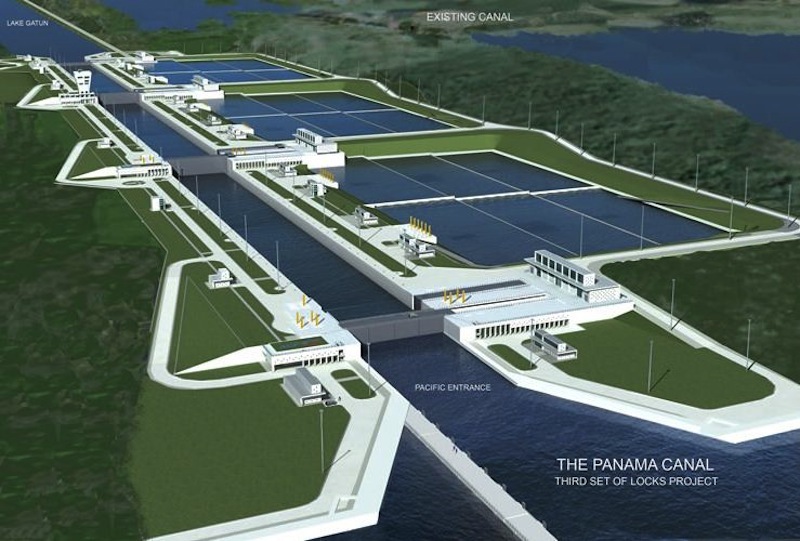The engineering giant Stantec is looking to gain a global foothold in water resources infrastructure through its definitive agreement to acquire MWH Global, a Broomfield, Colo.-based engineering, consulting, and construction management firm.
This is the biggest deal in Stantec’s 62-year history, according to the Edmonton Journal. Stantec confirms to BD+C that, if consummated, the acquisition would boost its annual revenue by 56% to 4.5 billion Canadian dollars (the equivalent of US$3.47 billion).
With 6,800 employees and 187 offices in 26 countries, MWH would also give Stantec a bigger presence in key markets that include the United Kingdom, Australia, New Zealand, South and Central America, and the Middle East. With this merger, Stantec—which is based in Edmonton, Alberta—would be generating 70% of its annual revenue from outside of Canada.
“It’s really a step into another era for us,” Bob Gomes, Stantec’s CEO, told the Journal. “But I don’t want to call it transformational because that sounds risky and it sounds like it’s lucky or it just happened. This is a firm we’ve known for a number of years.”
In this agreement, which both companies’ boards have signed off on, Stantec is paying cash for MWH’s stock. After taking into account assumed debt (estimated to equal 9.5 times MWH’s adjusted cash flow for 2015), the value of this deal is expected to be around US$795 million.
Stantec is financing the merger with equity financing—which includes a C$525 million public offering of 17.36 million subscription receipts priced at C$30.25 each—along with its C$800 million revolving credit facility, and C$450 million in non-revolving debt. CIBC World Markets and RBC Dominion Securities are underwriting the equity offer.
(Acquiring companies sometimes prefer offering subscription receipts—which automatically entitle the holder to receive the equivalent security of the buyer once the acquisition closes—to ensure they have the cash needed to complete the deal in advance of closing.)
Through synergies that would include leveraging its existing back-office functions, Stantec expects the merger produce savings of about $25 million annually by 2017. Neither company provided cost-saving details.

Stantec's growth strategy under CEO Bob Gomes is to expand its global footprint and diversity its services platforms. Image: Edmonton Journal
Stantec, which before this agreement had more than 15,000 employees in over 250 locations worldwide, says the rationale for this acquisition revolves around a growth strategy that positions the company to expand its geographic footprint beyond North America and to diversify its services platform.
MWH has worked on some of the more technically complex water and natural resource projects in the world, including the Panama Canal Third Set of Locks project. Hydroworld.com notes that MWH has been involved as well in the development and rehabilitation of numerous hydroelectric projects worldwide, such as Pakistan’s 102-MW Gulpur and 4,500-MW Diamer Bhasha dams, Malaysia’s 1,400-MW Baleh, and Argentina’s 1,890-MW Salto Grande.
Stantec expects this combination to build on MWH’s position as a prominent design firm within the global water market.
“The Engineering and Technical Services offered by MWH to the Energy and Industry sector are expected to add global capabilities in water-related design services to Stantec’s key hydro-power, oil and gas, mining, and industrial clients,” the company said in its prepared statement about the acquisition.
Stantec went on to speculate that MWH’s global client portfolio should generate cross-selling opportunities for Stantec’s Energy & Resources and Buildings & Environmental Services businesses.
Members of MWH’s management team, including presidents of key business units, will be joining Stantec after the acquisition closes. MWH’s chairman and CEO Alan Krause, and its CFO David Barnes, are also joining Stantec, although their roles and titles have not been announced publicly yet.
Barnes told the Boulder (Colo.) Daily Camera that MWH had spent much of the past year evaluating its capital structure and its ability to grow as an employee-owned firm. From that analysis, he said that MWHs managers concluded that merging with a larger, publicly traded entity would give it access to much-needed capital.
This deal still must be approved by at least two-thirds of MWH’s shareholders, who will vote on it in April. The acquisition also requires government approval. If all goes as planned the acquisition should be completed by the second quarter of this year.
Related Stories
Sponsored | | Oct 13, 2014
Liberty Utilities protects installers with Viega MegaPress
Liberty Utilities of New Hampshire wanted a way to keep its installers safe without compromising the quality of their installations, which is why the utility provider decided to start installing Viega MegaPress. SPONSORED CONTENT
| Oct 13, 2014
Department of Agriculture launches Tall Wood Building Competition
The competition invites U.S. developers, institutions, organizations, and design teams willing to undertake an alternative solution approach to designing and building taller wood structures to submit entries for a prize of $2 million.
| Oct 12, 2014
AIA 2030 commitment: Five years on, are we any closer to net-zero?
This year marks the fifth anniversary of the American Institute of Architects’ effort to have architecture firms voluntarily pledge net-zero energy design for all their buildings by 2030.
| Oct 10, 2014
A new memorial by Zaha Hadid in Cambodia departs from the expected
The project sees a departure from Hadid’s well-known use of concrete, fiberglass, and resin. Instead, the primary material will be timber, curved and symmetrical like the Angkor Wat and other Cambodian landmarks.
| Oct 9, 2014
Regulations, demand will accelerate revenue from zero energy buildings, according to study
A new study by Navigant Research projects that public- and private-sector efforts to lower the carbon footprint of new and renovated commercial and residential structures will boost the annual revenue generated by commercial and residential zero energy buildings over the next 20 years by 122.5%, to $1.4 trillion.
| Oct 9, 2014
More recession-postponed design projects are being resurrected, says AIA
About three quarters of the estimated 700 firms that serve as panelists on AIA’s Architectural Billings Index (ABI) had delayed or canceled major design projects in response to recessionary pressures. Nearly one-third of those firms now say they have since restarted stalled projects.
| Oct 9, 2014
Steven Holl's 'intersecting spheres' scheme for Taipei necropolis gets green light
The schematic design has been approved for the 50 000-sm Arrival Hall and Oceanic Pavilion for the Taiwan ChinPaoSan Necropolis.
| Oct 9, 2014
Beyond the bench: Meet the modern laboratory facility
Like office workers escaping from the perceived confines of cubicles, today’s scientists have been freed from the trappings of the typical lab bench, writes Perkins+Will's Bill Harris.
| Oct 8, 2014
New tools for community feedback and action
Too often, members of a community are put into a reactive position, asked for their input only when a major project is proposed. But examples of proactive civic engagement are beginning to emerge, write James Miner and Jessie Bauters.
| Oct 8, 2014
Massive ‘healthcare village’ in Nevada touted as world’s largest healthcare project
The $1.2 billion Union Village project is expected to create 12,000 permanent jobs when completed by 2024.
















